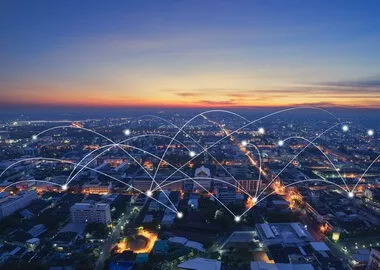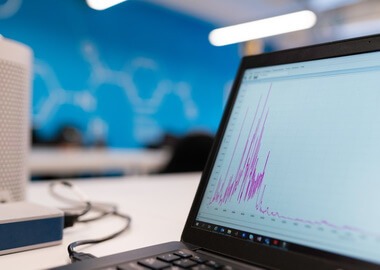Difference between Cloud, Fog and Edge Computing in IoT
Cloud computing is the most widely-used form of IoT data management. Along with cloud computing, fog and edge computing have been widely used to increase the speed and efficiency of data processing and bring intelligence closer to IoT devices that create data (sensors) and act on it (actuators).
In this post, we will compare these three forms of data technologies side-by-side, learn about the difference between cloud, fog and edge computing, and examine the benefits of each approach.
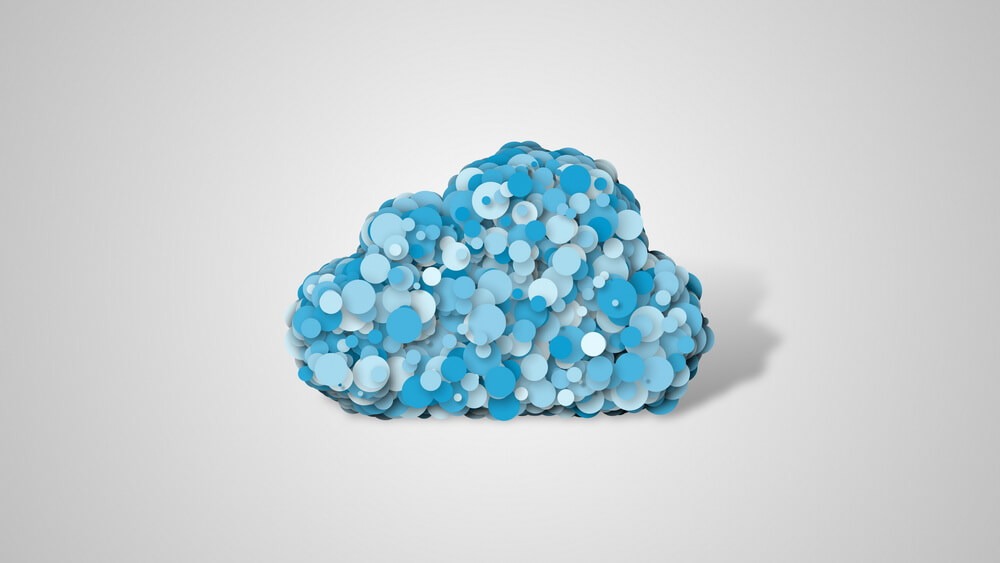
Cloud computing is the standard of IoT data storage right now. It’s the form of computing where data is stored on multiple servers and can be accessed online from any device. Instead of saving information to local servers or devices, users store it on third-party online servers placed in remote data centers.
To access data, a user needs to enter an account associated with the cloud service. The data undergoes end-to-end encryption, so even service providers have no access to users’ data assets. For the Internet of Things, this means securely storing and managing a massive volume of data generated by IoT ecosystem and having quick access to it from multiple devices, anytime, anywhere.
Looking for seasoned engineers with experience in software development in .NET, Java, Python or other modern stack technologies? Let’s talk!
Contact Digiteum
Fog computing works as an intermediate layer between a traditional centralized data storage system (cloud) and edge devices. Fog extends the cloud and brings computation and data storage closer to the edge. Fog consists of multiple nodes (fog nodes) and creates a local network which makes it a decentralized ecosystem — the main difference between fog and cloud computing.
When data gets to the fog layer, the node decides whether to process it locally or send it to the cloud. The data, therefore, can be accessed offline because some portions of it are stored locally as well. This is another key distinction between fog computing vs cloud computing, where all the intelligence and computing are performed and stored on remote servers.
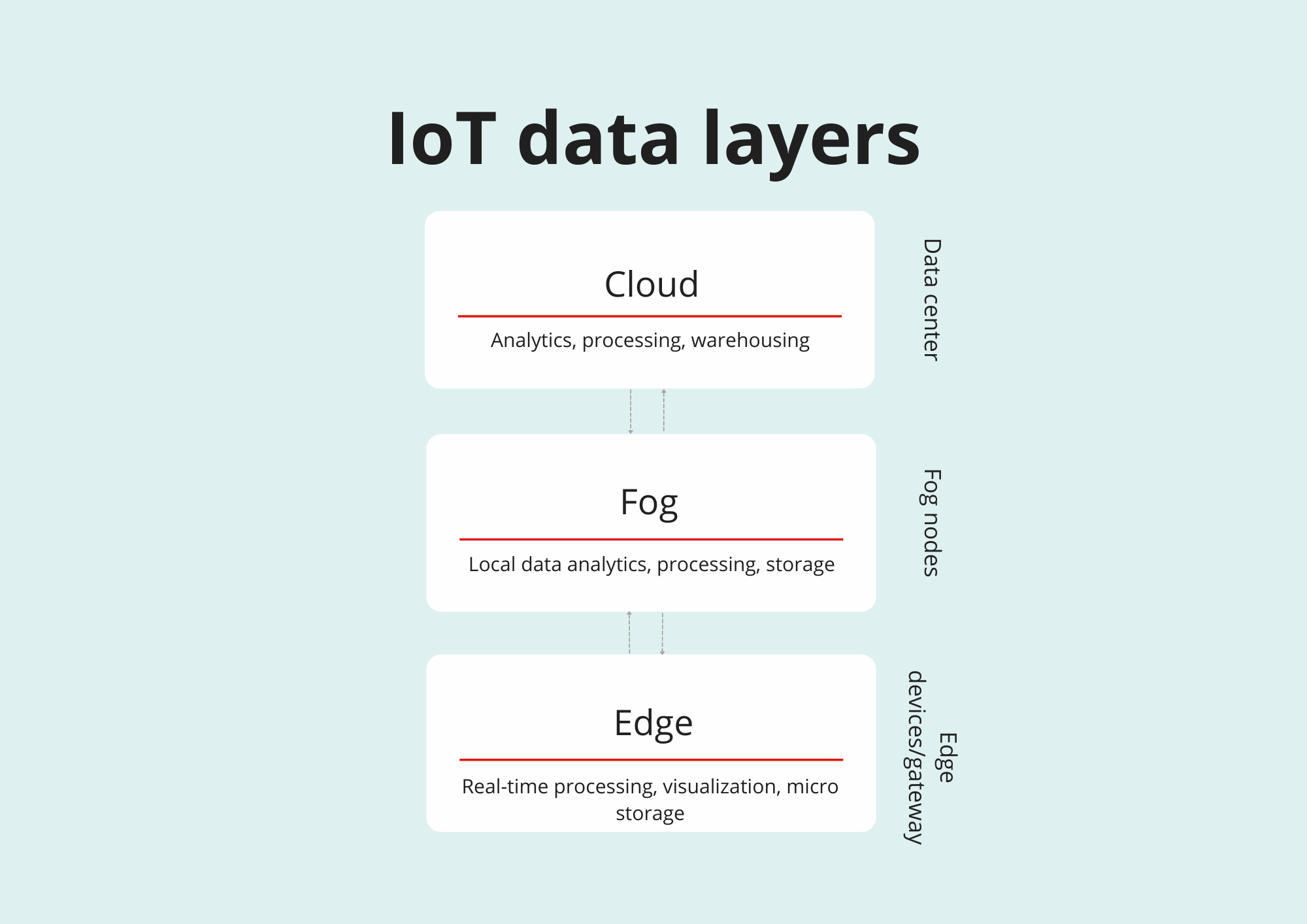
How is data processed by fog computing?
- Urgent requests are sent directly to the fog and processed locally in the network;
- Less sensitive data is transferred to the cloud’s main data centers where it’s stored and analyzed;
- Under normal conditions, most of the data go to cloud-based storage, local storage is used in scenarios where saving bandwidth is a priority.
Fog computing is useful when the Internet connection isn’t always stable. For instance, on connected trains, fog can pull up locally stored data in areas where the Internet connection can’t be maintained. It also allows implementing data processing at the local network closer to edge nodes, which is important for time-sensitive operations and real-time data analytics. This is what makes this approach more efficient and fast when comparing cloud vs fog computing.
Edge computing processes data away from centralized storage, keeping information on the local parts of the network — edge devices and gateways. Since the data is processed directly at the edge without being sent to the cloud, it allows for immediate response and provides unprecedented speed.
Edge computing is the least vulnerable form of decentralized storage. On the cloud, data is distributed to dozens of servers, whereas edge computing uses hundreds, possibly thousands of local nodes. Each device can act as a server in the edge network and process data independently. To break into, hackers would need synchronized access to thousands of distributed devices, which is practically impossible.
This is also the difference between fog computing and edge computing — fog acts as a network that connects to the cloud, while edge devices can be loosely connected and act on their own.
The main difference between cloud, fog and edge computing is where, when and how data from endpoint devices are processed and stored.
Cloud is the centralized storage situated further from the endpoints than any other type of storage. This explains the highest latency, bandwidth cost, and network requirements. On the other hand, cloud is a powerful global solution that can handle huge amounts of data and scale effectively by engaging more computing resources and server space. It works great for big data analytics, long-term data storage and historical data analysis.
Fog acts as a middle layer between cloud and edge and provides the benefits of both. It relies on and works directly with the cloud handing out data that don’t need to be processed on the go. At the same time, fog is placed closer to the edge. If necessary, it engages local computing and storage resources for real-time analytics and quick response to events.
Just like edge, fog is decentralized meaning that it consists of many nodes. However, unlike edge, fog has a network architecture. Fog nodes are connected with each other and can redistribute computing and storage to better solve given tasks.
Edge is the closest you can get to end devices, hence the lowest latency and immediate response to data. This approach allows to perform computing and store some (only limited) volume of data directly on devices, applications and edge gateways. It usually has a loosely connected structure where edge nodes work with data independently. This is what differentiates edge from network-based fog.
Here’s a cloud vs. fog vs. edge computing comparison chart that gives a quick overview of these and other differences between these approaches.
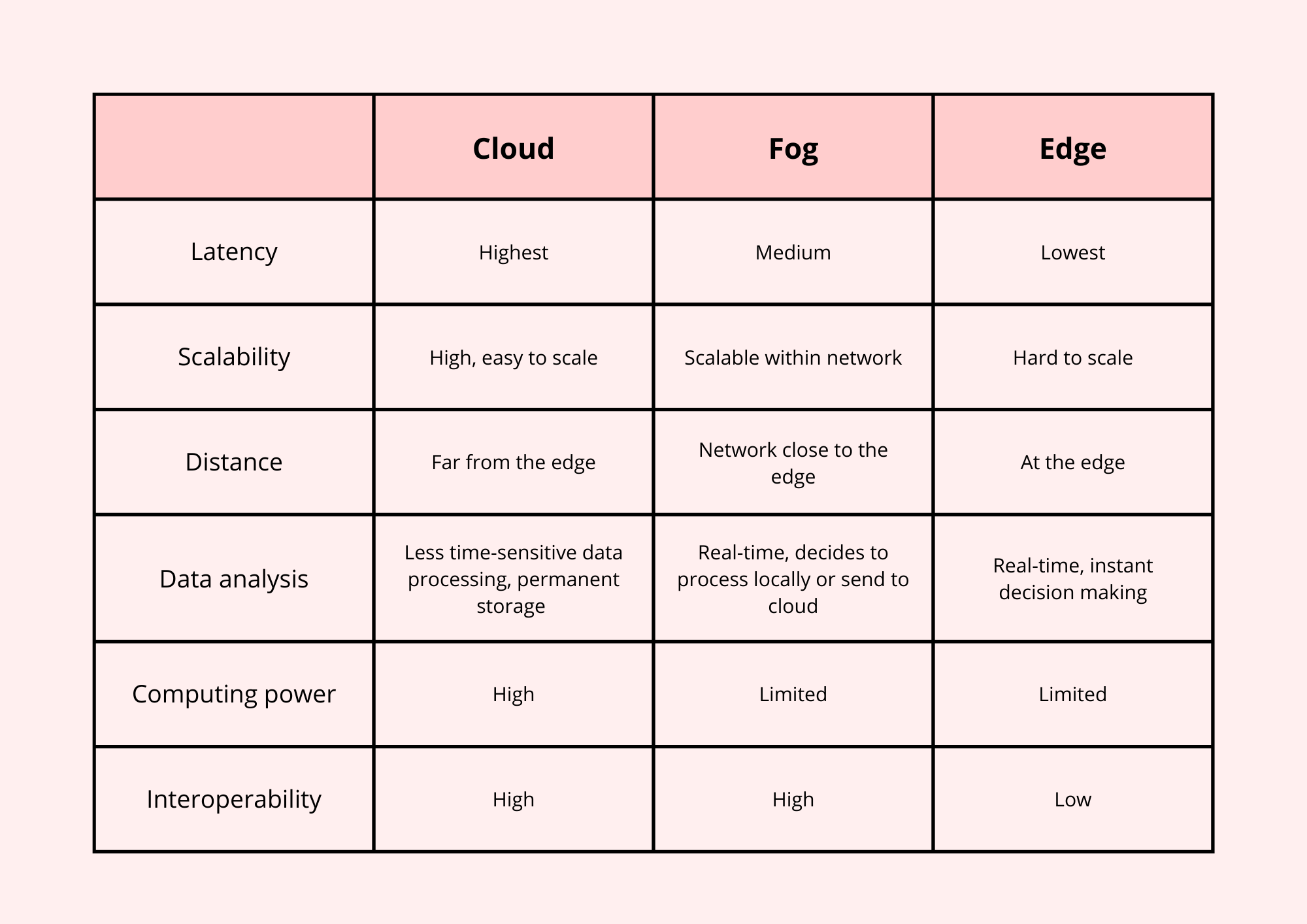
These computing technologies differ in their design and purpose but often complement each other. Let’s take a look at the key benefits of cloud, fog and edge computing to better understand where to use each of these approaches.
Edge and fog computing are less known than cloud but have a lot to offer to businesses and IoT companies in particular. These networks solve many issues that can’t be solved by IoT cloud computing services and adapt the decentralized data storage to particular needs. Let’s examine the benefits of edge, fog and cloud computing individually.
Benefits of fog computing
- Low latency. The fog network can process large volumes of data with little-to-no delay. Because a lot of data is stored locally, the computing is performed faster.
- Better data control. In cloud computing, third-party servers are fully disconnected from local networks, leaving little to no control over data. In fog computing, users can manage a lot of information locally and rely on their security measures.
- Flexible storage system. Fog computing doesn’t require constant online access. The data can be stored locally or pulled up from local drives — such storage combines online and offline access.
- Connecting centralized and decentralized storage. Fog computing builds a bridge between local drives and third-party cloud services, allowing a smooth transition to fully decentralized data storage.
Many companies focus on edge computing on their way to decentralization, whereas others adopt fog computing as a main data storage system due to its high speed and increased availability.
Benefits of edge computing
- No delays in data processing. The data stays on the “edges” of the IoT network and can be acted on immediately.
- Real-time data analysis. Works great when data have to be processed and immediately.
- Low network traffic. The data is first processed locally, and only then sent to the main storage.
- Reduced operating costs. Data management takes less time and computing power because the operation has a single destination, instead of circling from the center to local drives.
IoT edge computing is an optimal solution for small immediate operations that have to be processed at millisecond rates. When many small operations are happening simultaneously, performing them locally is faster and cheaper.
Benefits of cloud computing
- Rich resources. When comparing cloud vs. edge vs. fog computing, you can see that cloud is always the most resourceful approach to handling a massive volume of data. Aside from great computing and storage capacity, modern cloud provides end-to-end services to manage IoT data, including security, modern data analytics and visualization services, etc. This also explains the popularity of cloud business intelligence for web project development and high-load applications.
- Scalability. Cloud allows to scale easier, faster and more cost-effectively compared to edge and fog.
- Easy maintenance. Cloud platforms provide tools and services for easy, cost-effective maintenance.
Need help with choosing and setting up data infrastructure and services for your IoT application? Contact our experts to get a consultation on your project.
Cloud, edge and fog computing are often talked about in conjunction with IoT because these technologies support each other. Internet of Things relies on different data management services to store and analyze IoT device data and metrics, enable automation, etc.
Let’s see how cloud computing and IoT bring benefits to business and end-users, and why it’s advantageous to use them together.
Increased scalability
IoT systems produce and exchange a lot of data and require a lot of storage space to seamlessly function. Cloud platforms like AWS, Microsoft Azure, Google Cloud IoT service, and IBM IoT platform provide access to powerful cloud services able to handle the continuously growing volume of IoT data.
Read: How and why to connect Raspberry Pi to AWS IoT platform
Improved safety
IoT services should rely on safe data storage able to prevent hackers from trying to access and jeopardize the system. Decentralized storage represents one of the ways to secure sensitive resources. On the other hand, centralized cloud solutions provide in-built security to protect large volume of data.
Enable IoT
The decentralized data storage approaches (fog and edge) correspond with some of the main IoT needs, such as accessibility, safety, mobility, and real-time processing. Cloud services provide the scalability, power and resources needed to process a constantly growing volume of IoT data and quickly distribute the information among multiple servers, where it can be later accessed by a connected device anytime.
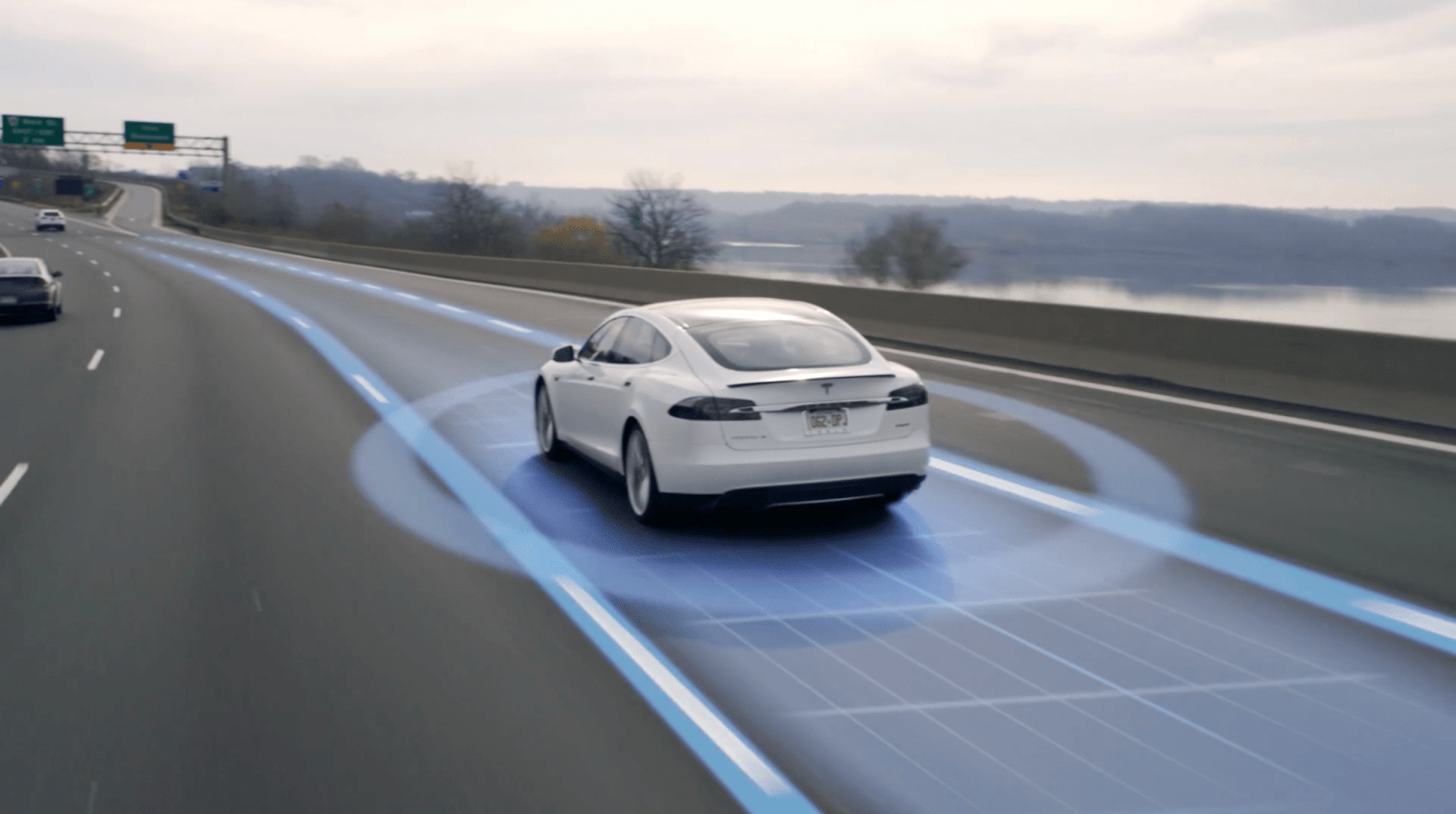
Cloud technology already brings multiple benefits to the Internet of Things, but progress doesn’t stop here. Right now, cloud, fog and edge technologies provide irreplaceable solutions to many Internet of Things challenges. Let’s take a look at some future possibilities for Internet of Things and different computing technologies.
New deployment options
IoT sector is rapidly growing, and we are likely heading into a future where every device is connected. With smart homes, cars, equipment, and everything else, vast masses of data are generated every second. Devices will continue to require increases in computer power, and cloud computing offers decentralized storage solutions for faster and cheaper deployments. Developers can leverage IoT cloud platforms and benefit from third-party computing power, data management services, inbuilt security, etc.
Internet of Things systems produce a lot of data. Developers and businesses can use it to know their users better. Cloud services provide a safe environment where this data could be analyzed, managed, and stored. Many services are already equipped with AI capabilities, including machine learning algorithms that model insights from data and enable automation.
Better security
A security breach in IoT networks could mean compromising entire businesses and industries, affecting millions of connected devices and people who use them. Cloud storages are more difficult to target because of their remote position and security practices. In the future, devices can use previously collected data to detect vulnerabilities before they even show.
Interaction between devices
The cloud improves communication between devices and applications, quickly sending data between data centers and local nodes. Fog and edge computing can be useful for offline communication and micro-operations performed at the edge where this data is produced (sensor/actuator), reducing operating costs and increasing speed.
Read: 10 key types of sensors in IoT
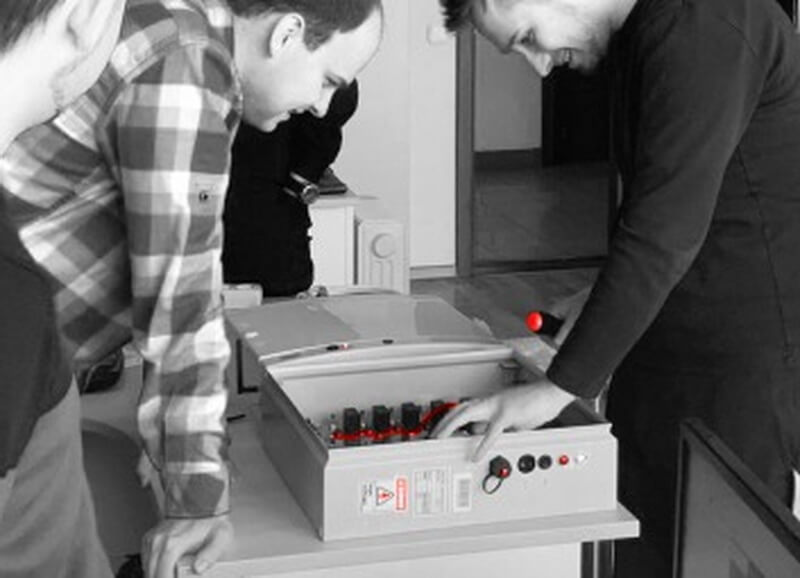
Even knowing the difference between cloud, fog and edge computing, it can be challenging to figure out which approach to pick and how to extract real benefits from it. The technology landscape for IoT and big data has been changing rapidly in the last several years. Adoption of cloud and other forms of computing for IoT requires skills and expertise.
We will help you eliminate these uncertainties and navigate through modern cloud and data solutions. You can leverage our experience in IoT software development, cloud computing, ETL pipeline development and big data analytics services, to choose the right approach for your project.
Here are a few actionable steps we take to select the optimal set of technologies, platforms and tools:
- Our senior tech specialists make in-depth technology analysis to study functional and non-functional requirements, determine constraints and select the tech stack that reflects project requirements and client’s business goals.
- We start new projects that lack defined goals and strategy with a profound Discovery Project. During this project, we gather requirements, perform the analysis of the market, technology landscape, and audience and propose a detailed project roadmap and kick off with a coherent development strategy.
- We utilize a custom framework to compare technologies to select the right tools and solutions for a given project, taking into consideration project budget and cost of resources, scalability requirements, limitations, and other important factors that will directly impact business outcomes.
Do you need help with choosing computing and data management solutions for your project? Leave your message and our experts will contact you within one day to talk about your needs.
Contact Digiteum
Short wrap-up
In this post, we went through the definitions and characteristics of main computing and storage approaches — cloud, fog and edge computing. We described how each of them works with data and made a quick cloud computing vs. fog computing vs. edge computing comparison to show where each approach works best.


